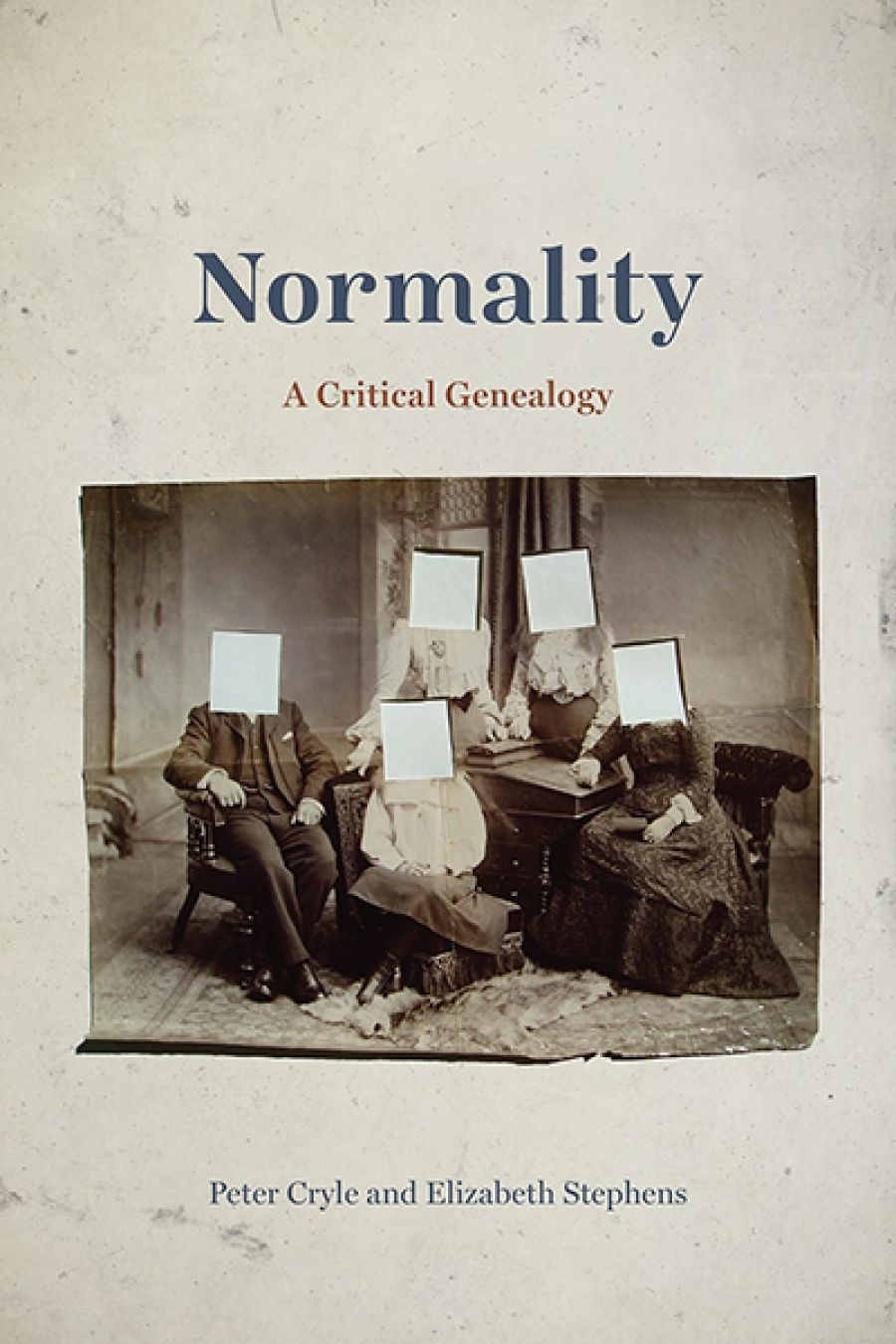
- Free Article: No
- Contents Category: Cultural Studies
- Custom Article Title: James Bennett reviews 'Normality: A critical genealogy' by Peter Cryle and Elizabeth Stephens
Once normal had emerged from discrete nineteenth-century professional contexts to enter the everyday lexicon at the same historical moment that biologist Alfred Kinsey published his landmark work, Sexuality in the Human Male (1948), the shifting meaning of normal, with all of its conceptual incoherence, took on enormous cultural power. Kinsey’s famous model of the sexual continuum in itself implies his rejection of normal as a binary but, as the authors argue, the scientist was unable to control the cultural effects of his own work. Thus, the notion of normal became the subject of intense, unending debate and disagreement that would pose a heavy burden for some minorities, notably sexual minorities as sexual behaviour had already become a major reference point for the concept of normal. The law and medicine enforced standards of normality, often in mutually informing ways, and the rise of the therapeutic state in the twentieth century exposed the sexually ‘deviant’ or ‘abnormal’ to its catalogue of cures and treatments, including such methods as aversion therapy and electroconvulsive therapy (ECT). Opposition to psychiatry as an arbiter of the normal was a key platform of gay liberation in the second half of the twentieth century. Even within the profession there was a struggle over how to understand same-sex relations, particularly in the United States where practitioners held deeply entrenched theoretical positions on the subject. Moreover, in the United States and throughout the Western world, medical expertise was not immune from societal attitudes. Eventually, gay activists took command of the kinds of classifications that had been used to construct and control homosexuality.
Only two of the nine chapters in Peter Cryle and Elizabeth Stephens’s book Normality: A critical genealogy directly address the theme of sex and sexuality, although this is unsurprising in the context of the long and complex genealogy of the concept from its first appearance in scientific texts (to be more specific, French medical writing) around 1820 until 1950. By that time, the idea of normal in a modern sense with all of its moral overtones had emerged to lodge firmly in popular consciousness. Their approach is historicist, mapping out in meticulous detail the shifting historical contexts and remarkably diverse fields of knowledge from anatomy to criminal anthropology that have a bearing on the normal (and where they exist, its opposite) to impress on the reader the significance of contingency (not pre-destiny) in its conceptual evolution. The result, as they concede, is a much messier and more contested history than one might have anticipated at the outset of their Australian Research Council-funded project.
 Alfred Kinsey (Wikimedia Commons)
Alfred Kinsey (Wikimedia Commons)
Taking their cue from Laura Doan in her book Disturbing Practices (2013), the authors situate their book as a contribution to the (sometimes tense) dialogue between historians and queer studies scholars. A close analysis of discursive forms of knowledge over time and space that apply to an idea as unstable and inconsistent as the normal, they argue, ‘can serve the purpose of resistant thinking’ more effectively than polemical critiques which have a tendency to reinforce the cultural power and omnipresence of the normal. Thus, they endorse Doan’s challenge of theorist David Halperin’s use of the normal, the legitimate, and the dominant as synonyms. This is to ignore a complex and contingent history that is at the very core of Cryle and Stephens’s history.
To this end, they also follow the argument of Michel Foucault regarding the circularity of words and knowledge formations that requires their rigorous backtracking to uncover the discursive array of antecedents underpinning what we now understand as the concept of normality. Where they part company with Foucault is in locating the origins of contemporary popular notions of the normal. While Foucault identifies the process of normalisation emerging in the disciplinary practices of large institutions in the nineteenth century to exert maximum social control, Cryle and Stephens instead pinpoint this moment in the nascent self-improvement and consumer cultures of the mid twentieth century.
This is not intended to deny the regulatory aspect of normalisation, but rather to broaden its analytical framework. The key site for them, then, is not the nineteenth-century prison but the twentieth-century office, where anthropometric data was mobilised for a multitude of commercial purposes.
This is an impressive piece of scholarship for its magnitude and fine-grained analysis that brings together key strands from a vast range of knowledge to produce a unified genealogy. Some of the early chapters are dense in composition, but the reader who perseveres will be both surprised and rewarded. The book will make an important contribution to both intellectual and cultural history.


Comments powered by CComment